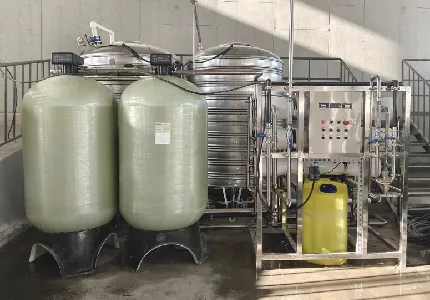loading...
- No. 9, Xingyuan South Street, Dongwaihuan Road, Zaoqiang County, Hengshui, Hebei, China
- admin@zjcomposites.com
- +86 15097380338
- Welcome to visit our website!
frp bridge deck
The Future of Bridge Infrastructure Exploring FRP Bridge Decks
In the realm of civil engineering, the quest for innovation and sustainability has become paramount. Among the various materials making waves in the field, Fiber-Reinforced Polymer (FRP) is emerging as a game-changer for bridge decks. With its unique properties and myriad of advantages, FRP is setting new standards for structural integrity, durability, and environmental sustainability.
Understanding FRP Materials
FRP is composed of a polymer matrix reinforced with fibers, typically made from glass, carbon, or aramid. This combination results in a composite material that boasts high strength-to-weight ratios, corrosion resistance, and excellent durability. The lightweight nature of FRP makes it particularly appealing for use in bridge decks, as engineers can significantly reduce the overall load on supporting structures.
One of the critical advantages of FRP is its resistance to environmental degradation. Traditional materials like steel and concrete are often susceptible to corrosion, especially when exposed to harsh weather conditions and de-icing salts. This vulnerability leads to frequent repairs and maintenance, resulting in increased costs and downtime. In contrast, FRP decks can withstand severe environmental conditions without deteriorating, leading to substantial long-term savings for infrastructure projects.
Advantages of FRP Bridge Decks
1. Lightweight and High Strength One of the most significant benefits of FRP bridge decks is their lightweight nature compared to conventional materials. This characteristic allows for easier installation and reduces the need for large supporting structures. The high strength of FRP also means that thinner and more efficient bridge decks can be constructed without compromising safety.
2. Corrosion Resistance FRP materials are inherently resistant to chemical attack from the environment. This feature eliminates the need for protective coatings typically required for steel bridges, allowing for reduced maintenance efforts and costs over the structure's lifespan.
frp bridge deck

3. Design Flexibility The versatility of FRP allows engineers to explore innovative designs that may not be achievable with traditional materials. Curved or complex shapes can be easily fabricated, leading to aesthetically pleasing structures that still meet engineering requirements.
4. Sustainability As the construction industry pushes towards greener practices, FRP materials fit the bill. Many FRP products are made from recycled fibers and can be designed for easy recycling at the end of their service life. The energy required for manufacturing FRP materials is also significantly less compared to traditional concrete or steel production, making it a more sustainable option.
5. Rapid Construction The lightweight attributes of FRP bridge decks lead to shorter construction times. Their prefabrication allows for quicker assembly on-site, minimizing disruptions to traffic and surrounding communities. This speed is particularly beneficial in urban areas where construction delays can lead to significant economic losses.
Applications and Case Studies
Several successful implementations of FRP bridge decks have been documented across the globe. Notably, projects in the United States and Europe have demonstrated the excellent performance characteristics of FRP in real-world conditions. Bridges utilizing FRP have reported remarkable durability even after experiencing heavy traffic loads and extreme weather events.
In one prominent example, the use of FRP in a pedestrian bridge in New York showcased not only the material’s efficiency but also its aesthetic flexibility, integrating seamlessly into the surrounding landscape. As governments and organizations recognize the advantages of FRP, more projects are likely to follow suit, leading to a significant paradigm shift in bridge design and construction.
Conclusion
As infrastructure demands grow amid increasing urbanization and climate challenges, the transition to advanced materials like FRP is not just a trend—it is a necessity. With its multitude of benefits, including reduced weight, corrosion resistance, design flexibility, and sustainability, FRP bridge decks represent the future of bridge engineering. By adopting these innovative materials, we can create a more resilient and environmentally friendly infrastructure that meets the needs of today's society while safeguarding the environment for future generations. This evolution in bridge design is paving the way for smarter, longer-lasting, and more efficient structures that can withstand the challenges of tomorrow.
-
The Rise of FRP Profiles: Strong, Lightweight, and Built to LastNewsJul.14,2025
-
SMC Panel Tanks: A Modern Water Storage Solution for All EnvironmentsNewsJul.14,2025
-
GRP Grating: A Modern Solution for Safe and Durable Access SystemsNewsJul.14,2025
-
Galvanized Steel Water Tanks: Durable, Reliable, and Ready for UseNewsJul.14,2025
-
FRP Mini Mesh Grating: The Safer, Smarter Flooring SolutionNewsJul.14,2025
-
Exploring FRP Vessels: Durable Solutions for Modern Fluid HandlingNewsJul.14,2025
-
GRP Structures: The Future of Lightweight, High-Performance EngineeringNewsJun.20,2025
